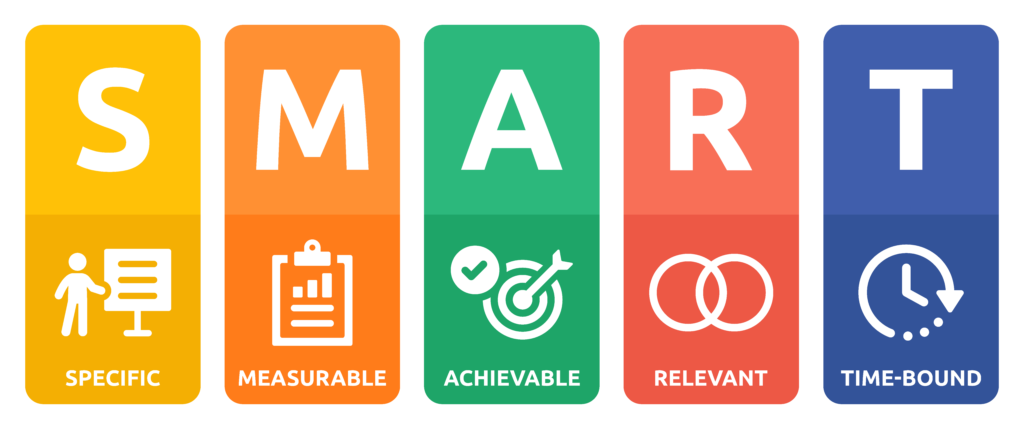By: Brigette Montgomery Wallman
Starting a new job or career is filled with many new things – new roles, responsibilities, challenges, and team members. While it is exciting, it can also feel very isolating and overwhelming. There is pressure to learn a lot all at once, such as the company culture, terminology, workflow, and applications. Due to the sheer volume of tasks required to acclimate, it can be easy to get swept up in trying to master everything, which only perpetuates the feeling of being overwhelmed. So how do you prioritize goals while maintaining your well-being? As one of my Project Managers once said:
“The first 90 days is one of the most important times to absorb and learn.” – Christina Olivarria
First, take a step back and recognize where you are today compared with where you were yesterday and where you will be tomorrow. Remember that you do not have to be an expert after those first 90 days, but you do have to be open to learning and growing. Below are some techniques I found helpful in my first three months at Yellow Brick.
CALL OUT THAT GOAL!
Defining a goal can be challenging for many people as it can be difficult to differentiate goals from daily self-improvement ideals. The best solution for this challenge is to call out new skills, projects, and objectives and create an action plan. It is important to have long-term goals and short-term goals. Long-term goals, such as earning a degree or certification, take longer. Short-term goals can be stand-alone objectives or stepping stones toward long-term goals, such as taking a class as part of a degree program. Short-term goals are great motivators; checking off “mini objectives” in your drive to achieve your long-term goal supports you in feeling accomplished.
As a new Yellow Brick employee, our Dress Rehearsal simulation events were a new concept for me. These events are one of our company’s core processes, so I wanted to understand them more thoroughly. I set a long-term goal to be able to effectively communicate to our clients what Dress Rehearsal is by my third month of employment. Yellow Brick published a book on the process, Simplifying the Complex: A Guide to Healthcare Facility Dress Rehearsal Simulation Planning, so I created a short-term goal to read the book by the end of 2022. I then created an action plan to achieve my short-term goal and decided to read a chapter a day. In addition, I added more action plans, such as reviewing different content folders and documents discussing Dress Rehearsals that my experienced team members created.
I learned that setting targets keeps me focused on my long-term goals. Think about what you want to achieve, then set specific, measurable, realistic, achievable, relative, and timely (SMART) goals.

“When you set goals, you create a vision of what your life or your business could look like. Then you start pushing yourself and your team to get the best results possible.” – Lucid Content Team
CREATE YOUR VISION
Once you have identified your goals, write them down. Taking the time to physically write out your goals solidifies your objectives and allows you to keep track of them. Be positive when developing your goals to help motivate yourself to complete them. Be creative and make it fun! Use pictures, colors, examples, etc. I am a visual person, so I love making vision boards. A vision board can be created on a budget by shopping for supplies at the dollar store or creating a digital version. A vision board can be a corkboard, a painting canvas, a sheet of construction paper, or a plank of wood. Make it your own: write on it, decorate it, hang it, or set it as a background on your phone or computer. The board must be somewhere you will see it frequently to provide daily motivation. As you accomplish your goals, update your board, remove the completed goals, and add new ones to keep the board moving.
READY… SET… ACTION!
From there, create your action plan. Action plans are the steps required to achieve your goal. Develop a timeline with targeted completion dates, including short-term goals and steps to accomplish your vision. I use my phone’s calendar to set reminders to complete objectives or update my goals. You can mix it up, but make sure that the action plan is written down in the same location to stay organized. Update your action plan as you progress. What you initially thought was required may change, and that is okay!
THE FOLLOW-THROUGH
The follow-up is one of the more complicated steps. Not reaching a goal by your intended deadline can be discouraging, but remember, there’s progress, no matter how small, from when you established a plan to where you are now. If your goal is behind schedule, make adjustments to reach that goal. Focus less on the “shoulda, woulda, coulda” and more on actionable steps to reach the next milestone toward your goal.
After 90 days at Yellow Brick, I am happy to share that I am well on my way to understanding the Dress Rehearsal process. As I learn more, new goals are revealed that I have added to my overall action plan. I often have to remind myself that this is a journey, not a destination. I feel less overwhelmed than I did on day one, and I’m well on my way to confidently answering the “What is Dress Rehearsal?” question, should I be asked.

